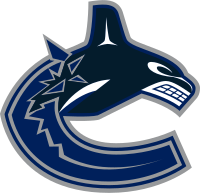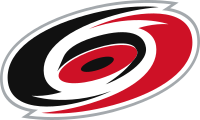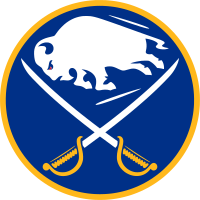Post by Andre Deblois on Aug 15, 2013 15:09:12 GMT -5
The question of what to do with players who have not played a professional game in North America in the previous year, whether due to career ending injury (i.e. Chris Pronger), defection to Europe (i.e. Alex Radulov) or personal choice (i.e. Tim Thomas), without retiring from professional hockey has been raised by many, and after a long discussion, the staff has come up with the following rule which will take effect immediately.
Any player without any games played in the previous season automatically gets 55 ratings for all ratings and the GM continues to honour full salary or uses an "inactivity buyout" (explained in the following paragraphs).
It is simply not fair to assume that players (like Chris Pronger) would show no regression and continues to enjoy solid ratings without earning them. This is automatic, no debating. At the same time, it is not entirely fair that a GM would have to honour a contract entirely, especially if it is due to off ice circumstances (defection, voluntarily not playing...etc).
Inactivity Buyout
Any player who retires/defects/receives a career ending injury without retiring for cap purposes (i.e. Pronger, Savard...) and who was signed before he turned 35, and has no more then half his contract years after turning 35 can be bought out without any cap penalty. A perfect example of this is Ilya Kovalchuk. We can't predict what NHL stars will do, and because our contracts don't line up with the NHL's we could be on the hook without it being our fault. Players who are signed before the age of 35 and spend no more then half their contract as a 35+ player (say at 33 year old 2 years into a 3 year contract) could be reasonably expected to play to the end of their contract without incident. Therefore, no cap penalties will be attributed to the team.
Any player who retires/defects/receives a career ending injury without retiring for cap purposes (i.e. Pronger, Savard...) and who was signed before he turned 35, but has more then half his contract years after turning 35 can be bought out with half the regular cap hit. This would be the case where a GM signs a 34 year old to a long term deal. There are reasonable doubts as to the players ability to live out his full contract and long term deals are given to such old players with a heavy dose of risk. Still not wholly unreasonable so only half of the usual cap hit for a buyout is a fair penalty.
Any player who retires/defects/receives a career ending injury without retiring for cap purposes (i.e. Pronger, Savard...) and who was signed after he turned 35 can be bought out with regular cap implications. After the age of 35, it becomes a season to season game to continue playing or retire for many players. We need to treat them that way. If a GM hands out a long term deal to an aging player, knowing full well that said player can retire anytime, he deserves the full penalty.
Keeping your player
Should the GM wish to pass on using the inactivity buyout, the players will remain on the team's roster with 55 ratings for any sim season following an NHL season without any games played. However, should the player come back from an injury and play games, they will receive the ratings earned by their performance in the following sim season.
GMs will be unable to re-sign players who did not play any North American professional games during the last year of their VHL contract.
Players Returning to Action
If a player defects and then returns to the NHL (i.e. Radulov, Karri Ramo) of chooses to personally stop playing and then start again (i.e. Thomas, Paul Ranger), AND the player was bought out, the last team to own the player's rights will have some degree of protection.
In this case, a league wide bidding process will take place to offer the player a new contract. The bidding process will play out in the same way as an RFA II signing, with every GM having a 24 hour period to offer a contract to the player. At the end of the 24 hour period, the team that last owned his rights will have the opportunity to match the highest bid or to accept compensation from the highest bidder (in accordance with RFA II compensation scale).
This bidding process will only take place after the player has completed one full season of professional North American hockey.
Players who return but who were not bought out (having been kept on the roster until their contract expired) are not subject to this bidding process and will instead be UFAs.
If you have any questions, or if any wording in these rules are unclear, please feel free to post in this thread and I will do my best to clarify things.
Any player without any games played in the previous season automatically gets 55 ratings for all ratings and the GM continues to honour full salary or uses an "inactivity buyout" (explained in the following paragraphs).
It is simply not fair to assume that players (like Chris Pronger) would show no regression and continues to enjoy solid ratings without earning them. This is automatic, no debating. At the same time, it is not entirely fair that a GM would have to honour a contract entirely, especially if it is due to off ice circumstances (defection, voluntarily not playing...etc).
Inactivity Buyout
Any player who retires/defects/receives a career ending injury without retiring for cap purposes (i.e. Pronger, Savard...) and who was signed before he turned 35, and has no more then half his contract years after turning 35 can be bought out without any cap penalty. A perfect example of this is Ilya Kovalchuk. We can't predict what NHL stars will do, and because our contracts don't line up with the NHL's we could be on the hook without it being our fault. Players who are signed before the age of 35 and spend no more then half their contract as a 35+ player (say at 33 year old 2 years into a 3 year contract) could be reasonably expected to play to the end of their contract without incident. Therefore, no cap penalties will be attributed to the team.
Any player who retires/defects/receives a career ending injury without retiring for cap purposes (i.e. Pronger, Savard...) and who was signed before he turned 35, but has more then half his contract years after turning 35 can be bought out with half the regular cap hit. This would be the case where a GM signs a 34 year old to a long term deal. There are reasonable doubts as to the players ability to live out his full contract and long term deals are given to such old players with a heavy dose of risk. Still not wholly unreasonable so only half of the usual cap hit for a buyout is a fair penalty.
Any player who retires/defects/receives a career ending injury without retiring for cap purposes (i.e. Pronger, Savard...) and who was signed after he turned 35 can be bought out with regular cap implications. After the age of 35, it becomes a season to season game to continue playing or retire for many players. We need to treat them that way. If a GM hands out a long term deal to an aging player, knowing full well that said player can retire anytime, he deserves the full penalty.
Keeping your player
Should the GM wish to pass on using the inactivity buyout, the players will remain on the team's roster with 55 ratings for any sim season following an NHL season without any games played. However, should the player come back from an injury and play games, they will receive the ratings earned by their performance in the following sim season.
GMs will be unable to re-sign players who did not play any North American professional games during the last year of their VHL contract.
Players Returning to Action
If a player defects and then returns to the NHL (i.e. Radulov, Karri Ramo) of chooses to personally stop playing and then start again (i.e. Thomas, Paul Ranger), AND the player was bought out, the last team to own the player's rights will have some degree of protection.
In this case, a league wide bidding process will take place to offer the player a new contract. The bidding process will play out in the same way as an RFA II signing, with every GM having a 24 hour period to offer a contract to the player. At the end of the 24 hour period, the team that last owned his rights will have the opportunity to match the highest bid or to accept compensation from the highest bidder (in accordance with RFA II compensation scale).
This bidding process will only take place after the player has completed one full season of professional North American hockey.
Players who return but who were not bought out (having been kept on the roster until their contract expired) are not subject to this bidding process and will instead be UFAs.
If you have any questions, or if any wording in these rules are unclear, please feel free to post in this thread and I will do my best to clarify things.















